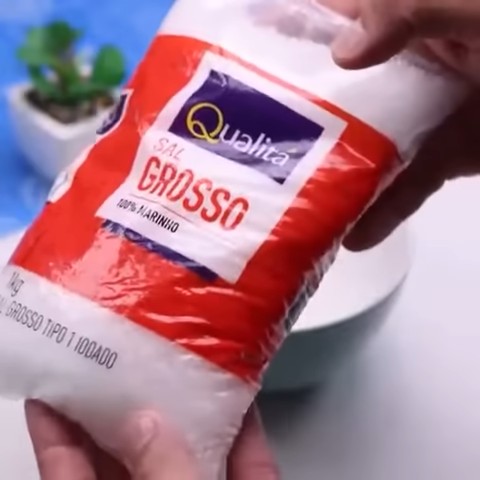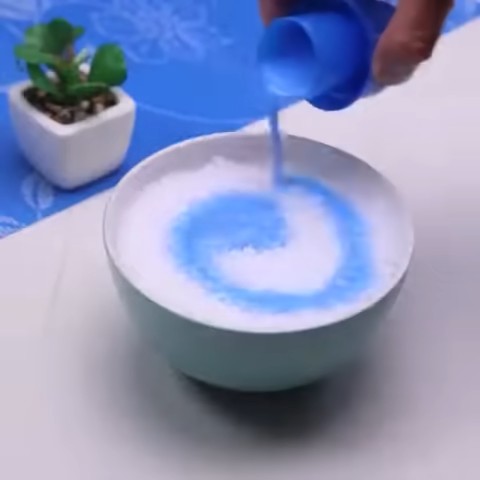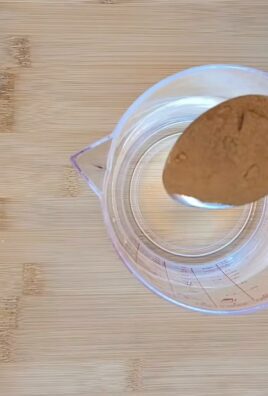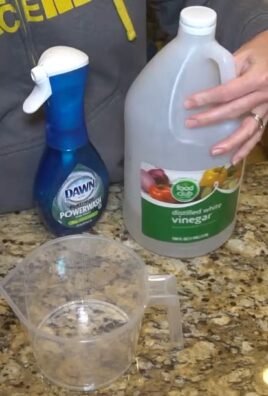Table salt everyday uses extend far beyond just seasoning your favorite meals! Have you ever stopped to consider the incredible versatility of this humble kitchen staple? I’m constantly amazed by the sheer number of clever hacks and DIY solutions that involve something so readily available and inexpensive.
For centuries, salt has been a precious commodity, even used as currency in ancient times. Its ability to preserve food made it vital for survival, shaping trade routes and influencing cultures across the globe. Now, we’re not just talking about preserving food; we’re talking about cleaning, crafting, and even beauty hacks!
In today’s world, we’re all looking for ways to simplify our lives, save money, and embrace a more sustainable lifestyle. That’s where these table salt everyday uses really shine. From tackling stubborn stains to creating unique DIY projects, salt offers a natural and effective alternative to harsh chemicals and expensive store-bought products. I’m excited to share some of my favorite tricks that will not only make your life easier but also reveal the hidden potential of this everyday ingredient. Get ready to be amazed!

Unlocking the Magic of Table Salt: More Than Just a Seasoning!
Hey there, fellow DIY enthusiasts! I’m so excited to share some amazing and unexpected uses for that humble container of table salt sitting in your pantry. We all know it’s essential for adding flavor to our food, but trust me, its capabilities extend far beyond the kitchen. Get ready to be amazed by these clever DIY hacks that will save you time, money, and maybe even a trip to the store!
Cleaning Powerhouse: Salt to the Rescue!
Salt’s abrasive texture and chemical properties make it a fantastic natural cleaner. Forget harsh chemicals; let’s harness the power of sodium chloride!
Cleaning Cast Iron Pans
Cast iron pans are kitchen staples, but cleaning them can be a pain. Soap can strip away the seasoning, leading to rust. Salt to the rescue!
1. Scrape off Excess Food: After cooking, use a spatula or scraper to remove any large food particles from your cast iron pan.
2. Add Salt and a Little Water: Pour a generous amount of coarse table salt (about 1/4 cup, depending on the pan size) into the pan. Add just enough water to form a paste.
3. Scrub Gently: Using a non-abrasive sponge or a stiff brush, scrub the pan in a circular motion. The salt will act as a gentle abrasive, lifting away stuck-on food without damaging the seasoning.
4. Rinse and Dry Thoroughly: Rinse the pan with warm water, making sure to remove all traces of salt. Immediately dry the pan completely with a clean towel.
5. Season (If Necessary): If the pan feels dry after cleaning, you can re-season it by lightly coating it with cooking oil and heating it in the oven at a low temperature (around 200°F or 93°C) for an hour.
Reviving Tarnished Copper
Copper pots, pans, and decorative items can lose their luster over time. But don’t worry, salt can bring back the shine!
1. Make a Paste: In a small bowl, mix equal parts salt, vinegar (white or apple cider), and flour to form a paste. The amount will depend on the size of the item you’re cleaning. Start with about 1 tablespoon of each.
2. Apply the Paste: Using a soft cloth or sponge, apply the paste to the tarnished copper surface.
3. Rub Gently: Gently rub the paste onto the copper, focusing on the tarnished areas. You’ll start to see the tarnish lifting away.
4. Rinse and Dry: Rinse the copper item thoroughly with warm water to remove all traces of the paste. Dry it completely with a clean towel.
5. Buff to a Shine: For an extra shine, buff the copper with a clean, dry cloth.
Cleaning Your Iron
Burnt residue on your iron can make ironing a nightmare. Salt can help remove that gunk!
1. Prepare a Salt Surface: Spread a thick layer of table salt onto an ironing board or a clean, heat-resistant surface.
2. Heat the Iron: Turn your iron on to the highest setting (without steam) and let it heat up.
3. Iron the Salt: Carefully run the hot iron over the salt, using a back-and-forth motion. The salt will help to loosen and absorb the burnt residue.
4. Wipe Clean: Once you’ve ironed the salt for a few minutes, unplug the iron and let it cool slightly. Then, wipe the soleplate with a clean, damp cloth to remove any remaining salt and residue.
5. Repeat if Necessary: If there’s still residue on the iron, repeat the process until it’s clean.
Cleaning Drains
Clogged drains are a common household problem. Before reaching for harsh chemical drain cleaners, try this simple salt solution.
1. Pour Salt Down the Drain: Pour about 1/2 cup of table salt down the clogged drain.
2. Add Hot Water: Follow the salt with about 2 cups of boiling water.
3. Let it Sit: Let the mixture sit in the drain for at least 30 minutes, or even overnight for stubborn clogs.
4. Flush with Hot Water: After the waiting period, flush the drain with plenty of hot water to clear away any remaining debris.
Cleaning Sponges
Sponges can harbor bacteria and odors. Salt can help keep them clean and fresh.
1. Prepare a Salt Solution: Fill a bowl or sink with warm water and add about 1/4 cup of table salt.
2. Soak the Sponges: Submerge the sponges in the salt solution and let them soak for several hours, or even overnight.
3. Rinse and Dry: Rinse the sponges thoroughly with clean water and squeeze out any excess water. Allow them to air dry completely.
Beauty and Personal Care: Salt’s Surprising Secrets
Believe it or not, salt can also be incorporated into your beauty routine!
Salt Scrub for Exfoliation
Exfoliating your skin removes dead cells and leaves it feeling smooth and refreshed. A salt scrub is a simple and effective way to achieve this.
1. Choose Your Oil: Select a carrier oil such as olive oil, coconut oil, almond oil, or jojoba oil.
2. Mix Salt and Oil: In a bowl, mix equal parts salt (sea salt or Epsom salt works best, but table salt can be used in a pinch) and your chosen oil. Start with about 1/4 cup of each.
3. Add Essential Oils (Optional): For added benefits and fragrance, you can add a few drops of your favorite essential oils, such as lavender, peppermint, or tea tree oil.
4. Apply to Skin: In the shower or bath, apply the salt scrub to your damp skin.
5. Massage Gently: Gently massage the scrub onto your skin in a circular motion, focusing on areas that tend to be dry or rough, such as elbows, knees, and feet.
6. Rinse Thoroughly: Rinse your skin thoroughly with warm water to remove all traces of the scrub.
7. Moisturize: After exfoliating, apply a moisturizer to your skin to keep it hydrated.
Sore Throat Gargle
A salt water gargle can help soothe a sore throat and reduce inflammation.
1. Mix Salt and Water: In a glass, mix 1/4 teaspoon of table salt with 8 ounces of warm water.
2. Gargle: Gargle with the salt water solution for 30 seconds, making sure to reach the back of your throat.
3. Spit Out: Spit out the solution after gargling. Do not swallow it.
4. Repeat: Repeat the gargle several times a day as needed.
Foot Soak for Tired Feet
A salt water foot soak can help relieve tired, achy feet and soften calluses.
1. Prepare the Foot Soak: Fill a basin or tub with warm water and add about 1/2 cup of table salt or Epsom salt.
2. Soak Your Feet: Soak your feet in the salt water solution for 15-20 minutes.
3. Dry Your Feet: After soaking, dry your feet thoroughly with a clean towel.
4. Moisturize: Apply a moisturizer to your feet to keep them hydrated.
Household Helpers: Salt’s Unexpected Talents
From preserving flowers to keeping ants at bay, salt has a surprising number of uses around the house.
Preserving Cut Flowers
Want to keep your cut flowers looking fresh for longer? Salt can help!
1. Prepare the Solution: Mix 1 tablespoon of table salt with 1 quart of water.
2. Pour into Vase: Pour the salt water solution into the vase instead of plain water.
3. Add Flowers: Arrange your cut flowers in the vase as usual.
4. Change Regularly: Change the salt water solution every day or two to keep the flowers fresh.
Keeping Ants Away
Ants are a common household pest. Salt can act as a natural deterrent.
1. Identify Ant Trails: Observe where the ants are entering your home and identify their trails.
2. Sprinkle Salt: Sprinkle a line of table salt along the ant trails and around entry points, such as windowsills and doorways.
3. Repeat as Needed: Repeat the application of salt as needed to keep the ants away.
Testing Egg Freshness
Not sure if your eggs are still good? Salt water can help you test their freshness.
1. Prepare the Salt Water: Fill a bowl with water and add about 2 tablespoons of table salt.
2. Submerge the Egg: Gently place the egg in the salt water.

Conclusion
So, there you have it! Unlocking the potential of humble table salt goes far beyond just seasoning your food. From tackling stubborn stains to revitalizing your home, the everyday uses of table salt are truly remarkable. This isn’t just about saving money; it’s about embracing a sustainable and resourceful approach to everyday living.
Why is this DIY trick a must-try? Because it’s simple, effective, and readily accessible. You likely already have table salt in your pantry, making it an incredibly convenient solution for a multitude of household problems. Forget harsh chemicals and expensive specialty cleaners; table salt offers a natural and budget-friendly alternative that delivers impressive results. It’s a win-win for your wallet and the environment.
But the magic doesn’t stop there. Feel free to experiment with variations to suit your specific needs. For instance, if you’re dealing with particularly stubborn mildew, try creating a paste of table salt and lemon juice for extra cleaning power. Or, if you’re looking to freshen up your garbage disposal, add a handful of table salt followed by cold water while the disposal is running. The possibilities are endless!
We’ve only scratched the surface of the incredible versatility of table salt. This unassuming ingredient is a powerhouse of potential, waiting to be unleashed in your home. Don’t just take our word for it – try these DIY tricks for yourself and witness the transformative power of table salt firsthand.
We’re confident that you’ll be amazed by the results. Once you experience the effectiveness and simplicity of these methods, you’ll wonder how you ever lived without them. So, ditch the expensive cleaners and embrace the natural cleaning power of table salt.
We encourage you to embark on this journey of discovery and share your experiences with us. What unexpected uses for table salt have you uncovered? What variations have you tried? Let us know in the comments below! Your insights could inspire others to unlock the full potential of this everyday ingredient. Let’s build a community of resourceful individuals who are passionate about sustainable and effective solutions.
Now, go forth and conquer those household challenges with the power of table salt! You’ll be surprised at how much you can accomplish with this simple, yet extraordinary, ingredient.
Frequently Asked Questions (FAQs)
Is table salt safe to use on all surfaces?
While table salt is generally safe for most surfaces, it’s always a good idea to test it in an inconspicuous area first, especially on delicate materials like polished wood or certain fabrics. Avoid using table salt on surfaces that are prone to scratching, such as stainless steel appliances, unless you’re using it in a very diluted solution and applying it gently. For sensitive surfaces, consider using a paste of baking soda and water instead. Remember, prevention is key! Regularly cleaning spills and messes will minimize the need for abrasive cleaning methods.
Can I use iodized or non-iodized table salt for these DIY tricks?
Both iodized and non-iodized table salt can be used for most of these DIY tricks. However, some people prefer non-iodized salt for cleaning purposes, as it doesn’t contain iodine, which could potentially stain certain surfaces. If you’re concerned about staining, it’s best to opt for non-iodized salt. For cooking purposes, iodized salt is often preferred as it provides an essential nutrient. Ultimately, the choice is yours, and the difference in effectiveness for most cleaning applications is minimal.
How do I store table salt properly to prevent clumping?
To prevent table salt from clumping, store it in an airtight container in a cool, dry place. Adding a few grains of rice to the container can also help absorb excess moisture. Avoid storing table salt near sources of humidity, such as the stove or sink. If your salt does clump, you can try adding a small amount of cornstarch to the container or simply breaking up the clumps with a spoon before using it. Proper storage will ensure that your table salt remains free-flowing and ready to use whenever you need it.
What are some other unexpected uses for table salt?
Beyond the uses mentioned in the article, table salt can also be used to:
* Clean cast iron skillets: Sprinkle salt into the skillet and scrub with a dry cloth to remove food residue.
* Remove rust: Create a paste of salt, cream of tartar, and water and apply it to the rust. Let it sit for a few hours, then scrub and rinse.
* Brighten laundry: Add a cup of salt to your washing machine to help brighten whites and prevent colors from fading.
* Soothe bee stings: Apply a wet paste of salt to the sting to help reduce pain and swelling.
* De-ice walkways: Sprinkle salt on icy walkways to melt the ice and prevent slips and falls.
Is table salt environmentally friendly compared to commercial cleaners?
Yes, table salt is generally considered more environmentally friendly than many commercial cleaners. Commercial cleaners often contain harsh chemicals that can pollute waterways and harm aquatic life. Table salt, on the other hand, is a natural mineral that is readily biodegradable. By using table salt for cleaning, you can reduce your reliance on harmful chemicals and contribute to a more sustainable lifestyle. However, it’s important to use table salt responsibly and avoid overusing it, as excessive salt runoff can still have negative impacts on the environment.
Can I use sea salt or Epsom salt instead of table salt for these tricks?
While sea salt and Epsom salt share some similarities with table salt, they are not always interchangeable. Sea salt has a coarser texture and may not dissolve as easily as table salt, making it less suitable for certain applications. Epsom salt, on the other hand, is primarily used for its magnesium content and is often used in bath soaks and muscle relaxants. While Epsom salt can be used for some cleaning purposes, it’s not as versatile as table salt. For the DIY tricks mentioned in this article, table salt is generally the best option.
What if the table salt doesn’t work for a particular stain or cleaning task?
While table salt is effective for many cleaning tasks, it may not work for every stain or mess. If you find that table salt isn’t working, you can try other natural cleaning agents, such as baking soda, vinegar, or lemon juice. You can also try combining table salt with other ingredients to create a more powerful cleaning solution. For example, a paste of table salt and vinegar can be effective for removing stubborn stains. If all else fails, you may need to resort to a commercial cleaner, but always try the natural options first.
How often should I use table salt for cleaning?
The frequency of using table salt for cleaning depends on your individual needs and the specific task at hand. For everyday cleaning, such as wiping down countertops or cleaning spills, you can use table salt as needed. For more intensive cleaning tasks, such as removing mildew or cleaning grout, you may need to use table salt more frequently. However, it’s important to avoid overusing table salt, as excessive salt buildup can damage certain surfaces. As a general rule, use table salt sparingly and only when necessary.




Leave a Comment